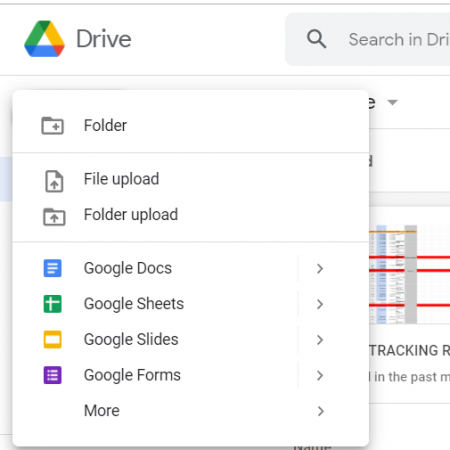3 Ways to Convert Excel Sheets to Word Docs Easily

Converting Excel sheets to Word documents can streamline your work process, whether you're compiling reports, creating presentations, or sharing data in a more readable format. Excel and Word are both powerful Microsoft Office tools, each serving different purposes. Excel shines in data manipulation and analysis, while Word is best for formatting and presenting text and images. Here are three efficient methods to convert your Excel data into Word documents, ensuring you can use the strengths of both applications seamlessly.
1. Copy and Paste

The simplest method to transfer data from Excel to Word involves copy and paste functions:
- Select the Data: In Excel, click and drag or use Ctrl+A to select all the data you want to move to Word.
- Copy: Press Ctrl+C or right-click and select ‘Copy’.
- Switch to Word: Open a new or existing Word document where you want to insert the data.
- Paste: Right-click inside the Word document, and from the paste options, choose either:
- Keep Source Formatting: Preserves Excel’s formatting in Word.
- Use Destination Styles: Converts the data to match Word’s current style settings.
- Link & Use Source Formatting: Creates a link between Excel and Word, updating the Word document when Excel data changes.
- Link & Keep Destination Formatting: Similar to above, but uses Word’s formatting.
- Picture: Pastes the selection as an image.
This method is straightforward but might require some manual cleanup in Word, especially if you're concerned about precise formatting or table structures.
💡 Note: This method is ideal for quick tasks or when you don't need dynamic updates between the Excel and Word documents.
2. Using Excel’s Export Function

Microsoft Excel offers an integrated export feature that allows you to directly convert spreadsheets into Word documents:
- Open Your Excel File: Begin by opening the Excel file you wish to convert.
- Select File > Export: Navigate to ‘File’ in the ribbon, and then click ‘Export’.
- Choose Create PDF/XPS Document: This might seem odd at first, but Word can open PDF files quite well, preserving formatting.
- Create PDF/XPS: In the window that opens, select ‘Create PDF/XPS’, then choose to save the file. Ensure you keep the option for ‘Open file after publishing’ checked if you want Word to open automatically.
- Open in Word: After the PDF is created, either Word will open it automatically or you can manually open the PDF in Word, which will convert it to an editable document.
| Advantages | Disadvantages |
|---|---|
| Formatting is mostly preserved. | Extra step needed to open PDF in Word. |
| Quick and straightforward conversion process. | Some complex Excel features might not convert perfectly. |

💡 Note: This method is best for preserving the layout and structure of your data, but remember that not all Excel features will translate perfectly into Word.
3. Using Third-Party Tools or Scripts

For those who need more advanced features or regular automated conversion, third-party tools or scripts can be very effective:
- Automated Tools: Software like PDF2Go or Convertio offer conversion services, though they might not handle complex Excel files as well as simpler data structures.
- Scripting with Python or VBA: If you’re familiar with coding:
- VBA: Use Visual Basic for Applications in Excel to write a macro that can convert your spreadsheets into a Word document, potentially even formatting it as needed.
- Python: Libraries like ‘openpyxl’ for reading Excel and ‘docx’ for writing to Word can automate this process. Here’s a basic example:
from openpyxl import load_workbook from docx import Document # Load the Excel file workbook = load_workbook('your_file.xlsx') sheet = workbook.active # Create a new Word document doc = Document() # Transfer data from Excel to Word for row in sheet.iter_rows(values_only=True): p = doc.add_paragraph('\t'.join(map(str, row))) # Save the Word document doc.save('output_doc.docx')</ul> </li>
This approach gives you the most control over how the data is converted and formatted, but requires some technical know-how.
💡 Note: Automation through scripting is perfect for batch conversions or when dealing with large datasets that need regular updates.
Wrapping Up

Converting Excel sheets to Word documents can significantly enhance the way you present and communicate data. Whether you choose the simplicity of copy-pasting, the straightforward export function, or the flexibility of third-party tools and scripting, there’s a method to fit every need. Each approach offers different benefits in terms of control over formatting, automation, and ease of use. By mastering these techniques, you’ll not only improve your efficiency but also ensure your data is displayed in the most appropriate and impactful way possible.
Can Excel formulas be preserved when converting to Word?

+Formulas themselves won’t transfer, but the data resulting from those formulas will be copied or pasted into Word. You can also add notes in Word to remind you or your audience about the calculations used.
How do I maintain cell borders in Word after pasting from Excel?

+When using the ‘Keep Source Formatting’ option, cell borders should transfer along with the data. If they don’t, you can manually apply borders in Word or convert the table to use Word’s border styling.
Can I convert multiple sheets at once?

+This depends on the method you’re using. For copy-paste, you’ll need to do each sheet individually. When exporting to PDF, all sheets can be included in one document. For scripting, you can loop through all sheets to generate multiple Word documents or compile them into one document.



